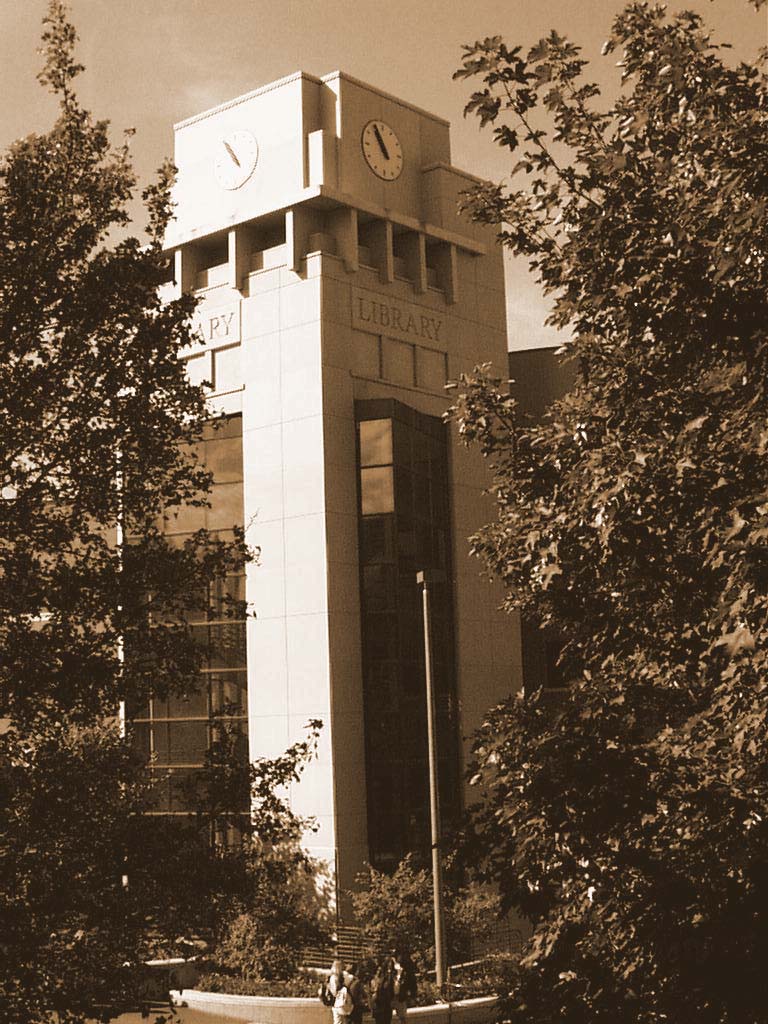
A Library Without Walls
 |
A Library Without Walls University of Idaho Library |
|
LIBRARY TECHNOLOGY |
Would you like to sit at your home computer and get needed information from the library? Or review data in a library on the other side of the country, or on the other side of the world? The idea of a "library without walls" became possible with digitized text. Once in digital form, text and graphics can be made available to anyone with a computer and a link to the computer where the information is stored. Libraries first took advantage of this capability with the digitizing of card catalog information in the early 1970's. Digitization of the comprehensive Barnard-Stockbridge photo collection, for example, would make this important resource available throughout the state of Idaho. Subscriptions to databases are beginning to replace traditional printed indexes as publishers are moving categories of information to digital forms. The world's largest publisher, the US Superintendent of Documents, has announced the wholesale shift of their efforts to the electronic format. As a full US government depository, the University of Idaho will be affected by this change. The revolutionary digital library is not a replacement of the current paper-based resource system. Rather it is an integral part of the "new" library. It takes advantage of contemporary information technologies to serve the information needs of faculty, students, and the public. The Past In 1978 the University of Idaho took the first step toward a library without walls with the introduction of an on-line catalog on CD-ROM. While it proved to be an excellent automated catalog, it was a catalog only. In order to provide library users with a better access to information, in 1992 the automated catalog was upgraded to an on-line system; this was the second step to a library without walls. The Present The on-line catalog also provides links to external databases, such as periodical indexes, as well as connections to other library catalogs. A third step toward a library of the future was the development of a "home page" on the World Wide Web. The WWW provides linking and point-and-click access among related Internet files, resources and services. The Library's home page lists services, policies and procedures. The Future The future of the library without walls is limited only by technology, access to equipment, and creativity of University of Idaho librarians as they move into this exciting new era. Full-text databases, encyclopedias, images, sound files and videos are clearly on the horizon. The mission of the University of Idaho Library is to acquire, make accessible, and preserve information while providing instruction and assistance to students, faculty and staff, and the people of Idaho and the Inland Northwest. To fulfill this mission in the future the UI Library must do for electronic information what they have always done for the print media: organize, access, and introduce users to resources with which they are unfamiliar. New technologies promise to provide answers to previously unsolvable problems. However, desktop access to library resources will take an increasing investment in electronic storage and retrieval of full-text materials, images, and other information sources to supplement the familiar library catalog. Opportunities for Support While books and journals will not become obsolete as information sources, the increasing costs of current information in electronic form requires different choices in the allocation of scarce resources. The opportunities for enhancement of the library's collections and increase in the availability of its collection is limited only by the resources provided. Your gift to the library will make it possible to sustain and develop the library's efforts to enhance its services throughout the state, to be truly "a library without walls." These are very exciting times, indeed revolutionary times for libraries. For so long we have been hearing about the technological revolution and the information age, and it has arrived. The information revolution is electronic, digital, and networked. It
enables us to re-engineer our functions with the following traditional
objectives in mind: selection, organization, interpretation, circulation,
and preservation of information - the same objectives that the paper-based
library has always had.
For more information, please contact:
|
![]() Library Associates / techgfts.htm / May 2000 / libspec@uidaho.edu
Library Associates / techgfts.htm / May 2000 / libspec@uidaho.edu